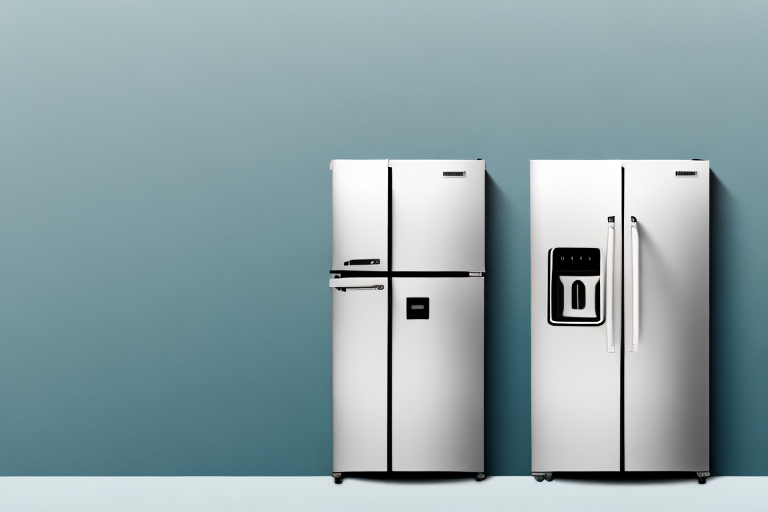KitchenAid refrigerators are known for their top-notch quality, but like any appliance, things can go wrong and problems can arise. Fortunately, many common KitchenAid refrigerator problems are relatively easy to diagnose and repair. Follow along with this guide to solve some of the most common KitchenAid refrigerator problems quickly and easily.
Diagnosing the Problem
Before attempting any repairs, it’s important to accurately diagnose the issue with your kitchen appliance. One of the most helpful ways to pinpoint the issue is to compare the results of a few simple tests against the symptoms you observe when your KitchenAid refrigerator stops working correctly. Diagnostic tests may include checking electrical connections, testing the temperature of each compartment, and listening for unusual noises.
If you are unable to diagnose the issue yourself, it is recommended to contact a professional appliance repair technician. They will be able to accurately diagnose the issue and provide you with the best solution for repairing your KitchenAid refrigerator.
No Cooling or Poor Cooling
If your KitchenAid refrigerator is not cooling at all, or only cooling weakly, the possibilities could include loose or damaged wiring, or a bad compressor or temperature control. Generally, this issue can be resolved by closing the freezer compartment door securely and verifying whether the fan is operating correctly. If necessary, you may need to replace the cooling fan or even the entire compressor.
If the fan is operating correctly, you may need to check the condenser coils for dirt or debris. If the coils are dirty, they will not be able to absorb heat from the refrigerator, resulting in poor cooling. Cleaning the coils with a vacuum cleaner or a soft brush can help improve the cooling performance of your refrigerator.
Water Pooling Underneath Refrigerator
If you notice water pooling on the floor beneath your refrigerator, there are a few possible causes. Check if the condensation on your refrigerator’s coil is sufficient to create water droplets. If not, check if the drain hose is clogged with dirt or food particles. Clogged hoses are a fairly common problem, but they can be easily cleared out with a quick exhaust hose cleaning.
Loud Clunking and Unusual Noises
If your KitchenAid refrigerator is loudly clunking or making other unusual noises during operation, there are a few things to check. Make sure that the unit is level, since if the legs are not properly balanced then the compressor can create loud vibrations when working. If that does not solve the issue, it may be necessary to replace worn ball bearings in the compressor.
Refrigerator Not Running at All
If your KitchenAid refrigerator is not running at all, first check if the power cord is properly plugged in. Then confirm that the fridge’s circuit breaker is still in working order. If everything looks good, inspect the condenser coils of the appliance and make sure that they are free of dust and debris. If necessary, it may also be necessary to replace the thermostat.
Frost Build-Up in Freezer
Excessive frost buildup in the freezer compartment of your KitchenAid refrigerator may be caused by several elements. Possible causes include a malfunctioning defrost heater, thermistor, or evaporator fan motor. To determine which part is failing, examine your appliance’s defrost system and take measurements with a thermometer where applicable. Replacing defective parts should resolve this issue.
Refrigerator Not Cooling Evenly
Another common issue is when your KitchenAid refrigerator’s cooling is uneven. This could be caused by two problems: weak air circulation or incorrect temperature settings. To cure either problem, check if your fridge’s seals are still tight and make sure the fan is correctly operating. To correct temperature imbalances, consider adjusting the appliance’s thermostat, positioning food away from fans, or increasing cold airflow in each section.
Ice Maker Not Working Properly
If your KitchenAid fridge’s ice maker isn’t producing ice cubes correctly or at all, check its water supply line for kinks or tight bends that could restrict water flow. Next, inspect if there is any ice blocking the unit’s ejector arm; you may have to defrost the unit in order to free it up. Finally check if the solenoid valve is blocked with limescale. If so, replace it.
Troubleshooting Tips for Common KitchenAid Refrigerator Problems
By troubleshooting your KitchenAid refrigerator problems yourself, you will usually save time and money and may even discover a newfound appreciation for appliances that come with lots of options to troubleshoot from. Take note of these tips to diagnose any common KitchenAid refrigerator problems:
- Perform regular maintenance. This can help identify potential issues before they become full-blown problems.
- If you suspect a part is defective or malfunctioning, always consult a certified technician to confirm before attempting repairs yourself.
- Take the time to read up on tutorials, tips and step-by-step guides on everything from replacing condenser coils to troubleshooting wiring issues.
- Stay up-to-date on recalls as they may impact your unit’s performance and safety.
- Ensure that your kitchen appliance is level at all times.
By following these steps when dealing with KitchenAid refrigerator problems, you can ensure that you will have an efficient and reliable appliance free of headaches.













